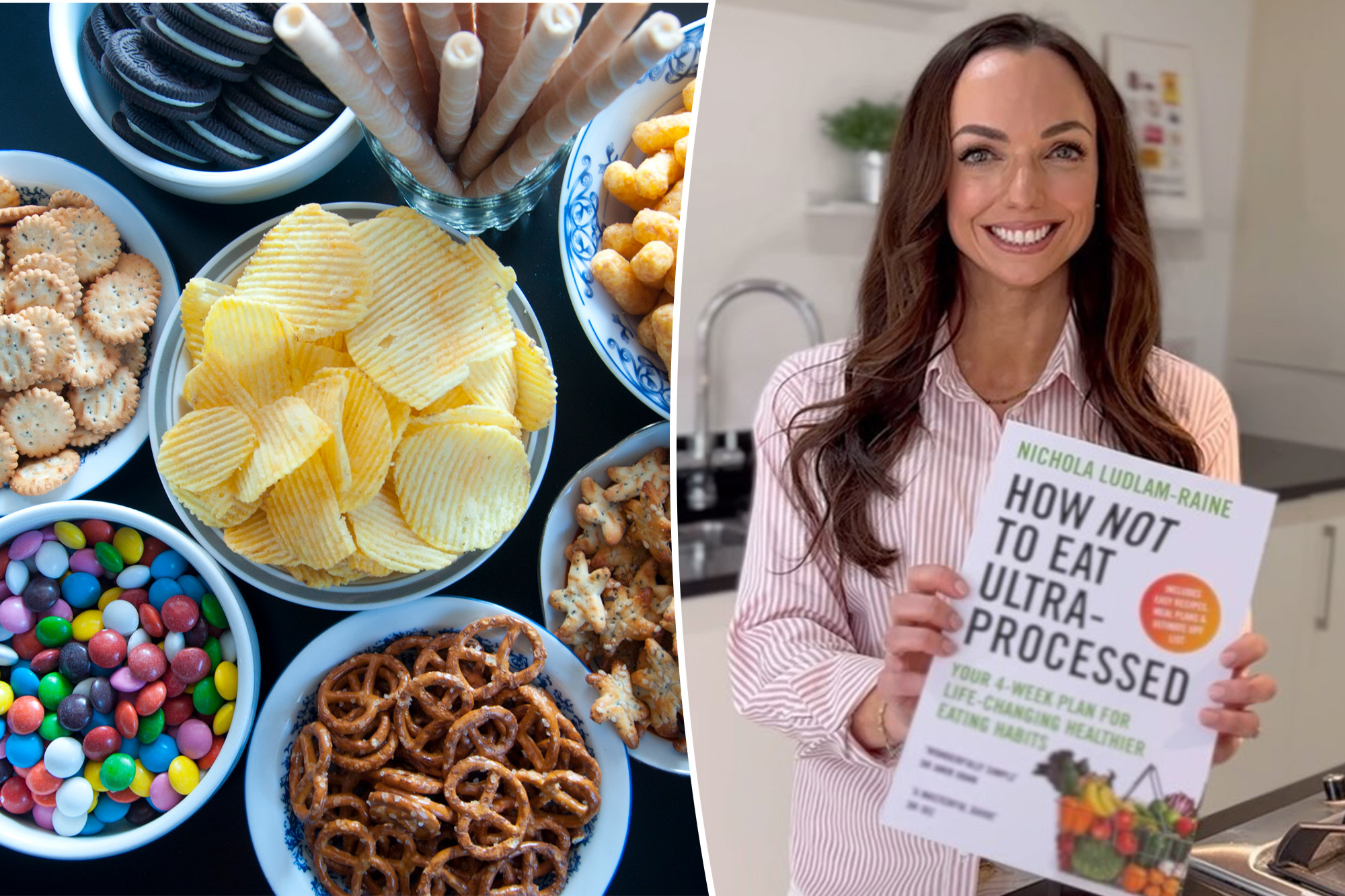
Ultra-processed foods (UPF) are prepackaged items that are high in salt, refined sugars, cholesterol-raising fats, and other lab-based ingredients.
Diets high in UPF have been linked to obesity, type 2 diabetes, cancer, cardiovascular disease and even early death.
Despite the known dangers, UPFs can be a hard habit to break. These items are designed for convenience and cravings, with a combination of flavors and additives designed to encourage addictive eating behavior.
UK registered dietitian Nichola Ludlam-Raine, who wrote the new book How to Stop Eating Ultra-Processed: Your 4-Week Plan for Life-Changing Healthy Eating Habits, has made it her mission to understand the psychology of cravings and help people wean. themselves out of the UPFs.
She’s identified three main types of hunger – head, heart and stomach – and ways to deal with each to ensure you’re making the healthiest food choices.
Head hunger
Ludlam-Raine explains that head hunger is a desire that arises from a sensory trigger, such as the sound of a container being opened or the smell of fresh bakery items in the supermarket.
“This type of hunger tends to come on suddenly and demands to be satisfied almost immediately, making it tempting to eat an ultra-processed snack. But you’re unlikely to feel completely full afterwards,” she wrote in the Daily Mail.
“Although they may taste good, they don’t do much for our health, and eating them can lead to further food cravings only a short time later because they don’t supply the nutrients our bodies need,” he added. she.
Ludlam-Raine suggests that we can avoid these triggers and cravings for UPF by modifying our environment. “Once you’ve identified your triggers, make an alternative plan to break the habit with a positive (not negative!) intention,” she advised.
She claims that distractions, such as a change of scenery or removing yourself from a stimulating environment, can suppress cravings. Additionally, by keeping less nutritious UPFs out of sight and placing healthy foods at the front of the fridge or cupboards, we are encouraged to make healthier choices.
Finally, enjoying these healthy foods creates a pleasurable experience to return to: “By eating meals, as well as snacks and ‘treats,’ carefully, you will enhance the pleasurable experience for all foods and not just UPF that are higher in sugar and fat.”
Hunger in the heart
Ludlam-Raine defines heart hunger as emotional eating, cravings triggered by negative and positive emotions that provide immediate comfort, whether it’s celebration or celebration.
“While using food as a reward or an occasional pick-me-up isn’t necessarily a bad thing, it can be if it becomes the only or primary coping mechanism,” she wrote in the Daily Mail. “We are also more likely to be drawn to sweet, high-fat, highly processed or salty foods at such times because they represent a ‘reward’ or a ‘treat’ and often have connotations from childhood .
Ludlam-Raine recommends mindfulness techniques to address heart hunger. Start by becoming curious about your heart’s hunger, sitting down with a pen and paper, and identifying emotional triggers and coping strategies that aren’t related to food, such as calling a friend or going for a walk.
If you’re still feeling hungry, Ludlam-Raine says to take a deep breath before deciding what to eat: “Shorter breaths and longer breaths can stimulate the parasympathetic nervous system, helping us feel calmer.” .
She also suggests taking time to really enjoy your food before and during eating, an experience that can be enhanced by slowing down and eliminating distractions like the TV or your phone.
Stomach hunger
Ludlam-Raine describes stomach hunger as physical symptoms of hunger that the body signals, including impatience, tiredness, rumbling stomach or stubbornness.
Unlike the immediate and constant quality of head hunger, stomach hunger builds gradually until we are full. While head and heart hunger fade after about 15 to 20 minutes, stomach hunger only intensifies over time.
Since the body needs energy and nutrients to function properly, Ludlam-Raine emphasizes the importance of eating before stomach hunger reaches a critical level.
“If we’re ravenous, it can be easy to eat too quickly or be drawn to high-fat, high-sugar foods that provide a quick hit but won’t leave you feeling full for a long time,” she explained. “Eating when we’re very hungry can also cause us to overeat, until we’re at the other end of the hunger scale, feeling uncomfortable or painfully full.”
Ludlam-Raine suggests creating an eating regimen that works for you, whether it’s three square or regular meals, to keep your body healthy and happy.
Whatever your approach, stick to your pattern and try not to skip meals, as this can lead to excessive stomach hunger, which can encourage unplanned UPF consumption,” she concluded to the Daily Mail. “Balanced meals containing whole grains, protein and vegetables will keep you full and satiated … keeping your blood sugar levels stable and those cravings at bay.”
#nutritionist #easy #ways #curb #junk #food #cravings
Image Source : nypost.com


